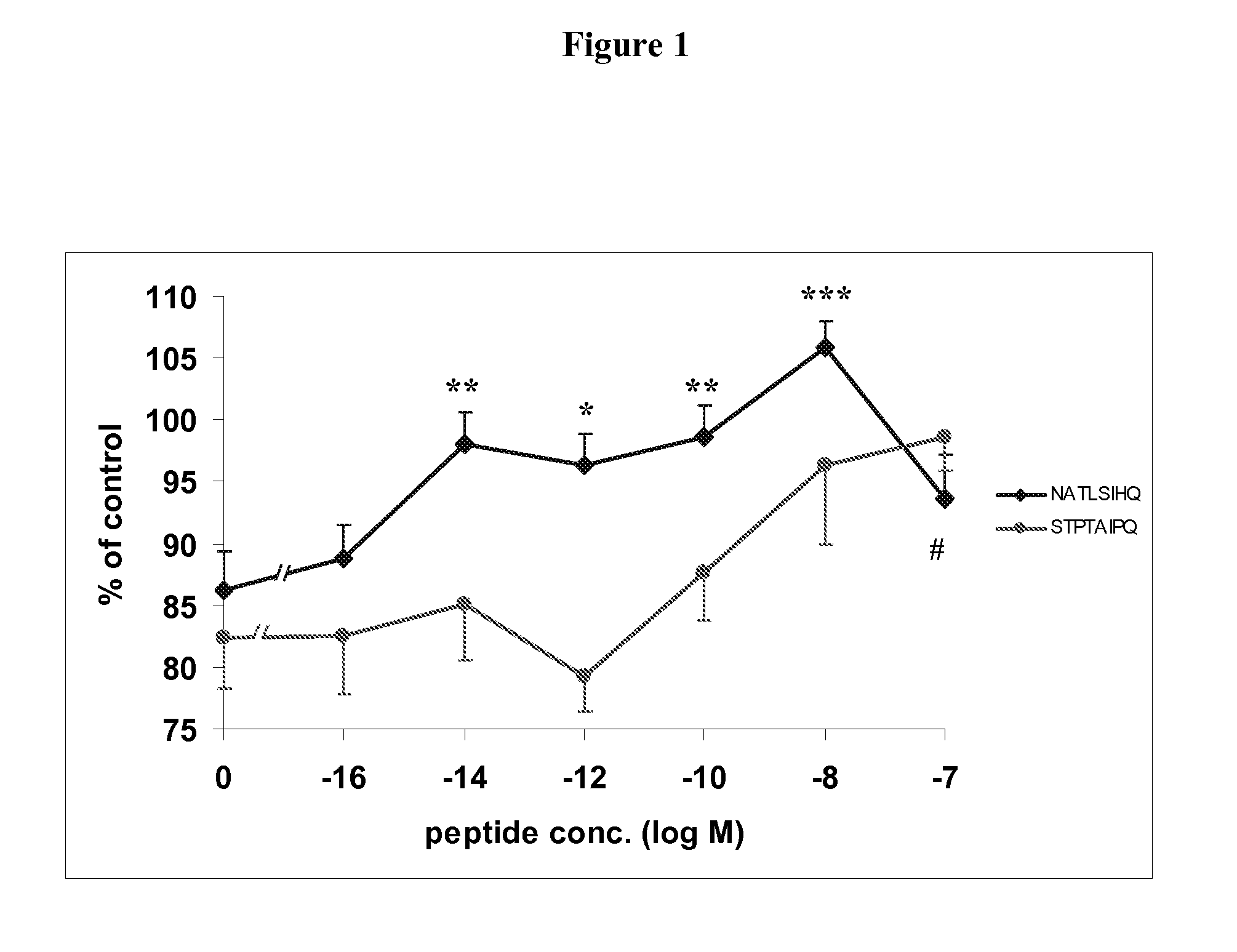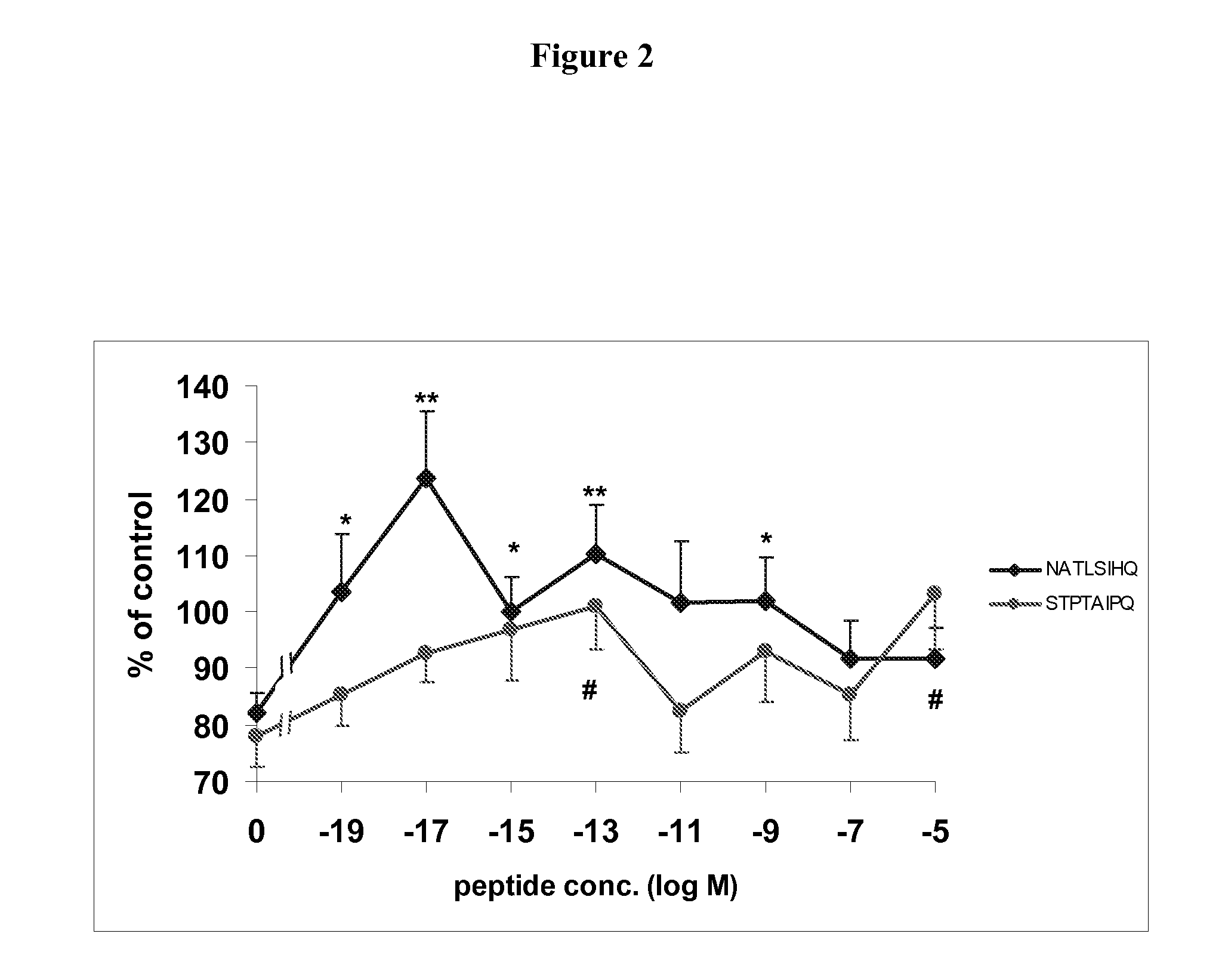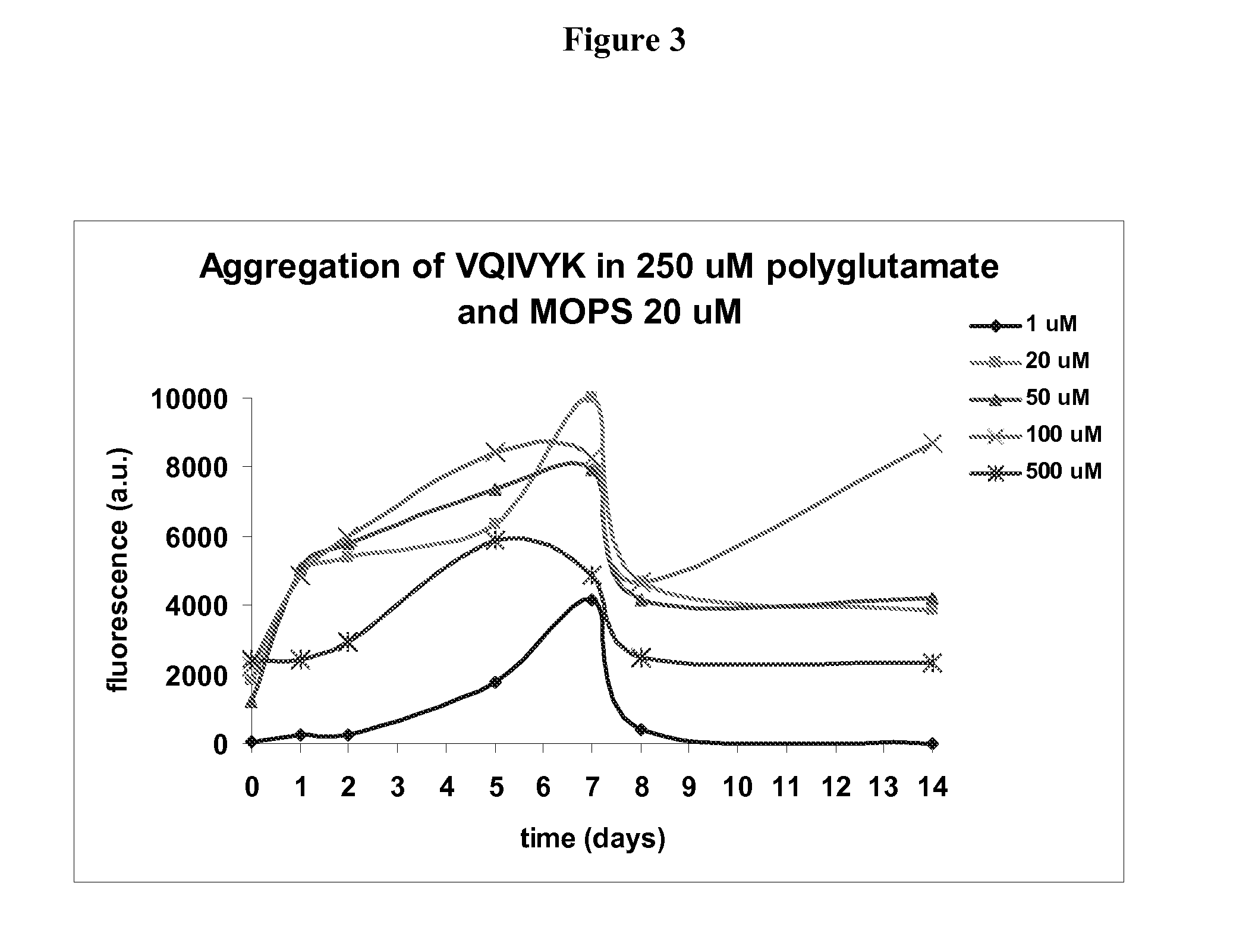Neuroprotection using nap-like and sal-like peptide mimetics
a technology of peptide mimetics and nap-like proteins, applied in the field of nap-like and sal-like peptide mimetics, polypeptides, can solve the problem that the conservation peptide variation of its core sequence is not predicted to be therapeutically effectiv
- Summary
- Abstract
- Description
- Claims
- Application Information
AI Technical Summary
Benefits of technology
Problems solved by technology
Method used
Image
Examples
example 1
Search for NAP-Like and SAL-Like Sequences
[0119]A bio-informatics search was launched to address whether there are NAP-like or SAL-like sequences in other proteins that provide neuroprotection (e.g., through interaction with microtubules) and whether there are tubulin specific sequences that resemble NAP and provide neuroprotection.
[0120]The NAP and SAL sequences were submitted to a number of different search engines: NCBI, OMIM, UniProtKB / Swiss-Prot, EMBOSS Pairwise Alignment Algorithms, ClustalW, T-coffee, BLAST, RADAR, PPSearch, PROSITE, Phylogenetic Tree, and Selecton.
[0121]In the search for human tubulin proteins, the field descriptions tubulin and the boolean operators for Homo sapiens organism were used in UniProtKB / Swiss-Prot. Blosum62 with water alignment was used in EMBOSS in order to find the best region of similarity between two sequences. Multiple alignments were obtained from ClustalW, with further use of the Jalview editor.
[0122]For BLAST, and the similar programs RAD...
example 2
Assays for Neuroprotective Activity
[0129]NATLSIHQ (SEQ ID NO:4) and STPTAIPQ (SEQ ID NO:6) are NAP-like peptides. The effect of these peptides on astrocyte and neuronal survival following ZnCl2 and beta-amyloid intoxication were tested.
[0130]A. Methods:
[0131]1. Cerebral Cortical Astrocytes
[0132]Cell cultures were prepared as previously described (McCarthy KD, de Vellis J., J. Cell Biol., 85:890-902 (1980); Gozes I et al., J. Pharmacol. Exp. Ther., 257:959-66 (1991)). Newborn mice (Harlan Biotech Israel Ltd., Rehovot, Israel) were sacrificed by decapitation and the brain was removed. The cortex was dissected and meninges were removed. The tissue was minced with scissors and placed in Hank's balanced salts solution X1 (HBSS, Biological Industries, Beit Haemek, Israel), 15 mM HEPES Buffer pH 7.3 (Biological Industries, Beit Haemek, Israel) and 0.25% trypsin (Biological Industries, Beit Haemek, Israel) in an incubator at 37° C. 10% CO2 for 20 minutes. The cells were then placed in 8 ml ...
example 3
The Effect of NAPVIPQ and NATLSIHQ on Tau Pathological Aggregation Leading to Neurofibrillary Tangle Formation
[0142]VQIVYK aggregation: Tau is a highly soluble protein. The unfolded protein lacks a defined 3D structure. Its main role is stabilization of microtubules in neuronal axons. Tau contains three or four microtubule binding repeats. 306VQIVYK311 is a peptide derived from the beginning of the third microtubule binding repeat of tau, which is present in all tau variants. This sequence was found to be important for the aggregation of tau into paired helical filaments (PHFs), which aggregate to make the tangles found in Alzheimer's disease and related disorders.
[0143]It is hypothesized that inhibition of tau aggregation will constitute future therapeutics. The aim of this study was to compare NAP alpha-aminoisobutyric acid (where the prolines in NAPVSIPQ were substituted with alpha-aminoisobutyric acid) with NAPVSIPQ containing prolines in an in vitro tau-like aggregation assay.
[...
PUM
| Property | Measurement | Unit |
|---|---|---|
| Fraction | aaaaa | aaaaa |
| Acidity | aaaaa | aaaaa |
Abstract
Description
Claims
Application Information
 Login to View More
Login to View More - R&D
- Intellectual Property
- Life Sciences
- Materials
- Tech Scout
- Unparalleled Data Quality
- Higher Quality Content
- 60% Fewer Hallucinations
Browse by: Latest US Patents, China's latest patents, Technical Efficacy Thesaurus, Application Domain, Technology Topic, Popular Technical Reports.
© 2025 PatSnap. All rights reserved.Legal|Privacy policy|Modern Slavery Act Transparency Statement|Sitemap|About US| Contact US: help@patsnap.com



